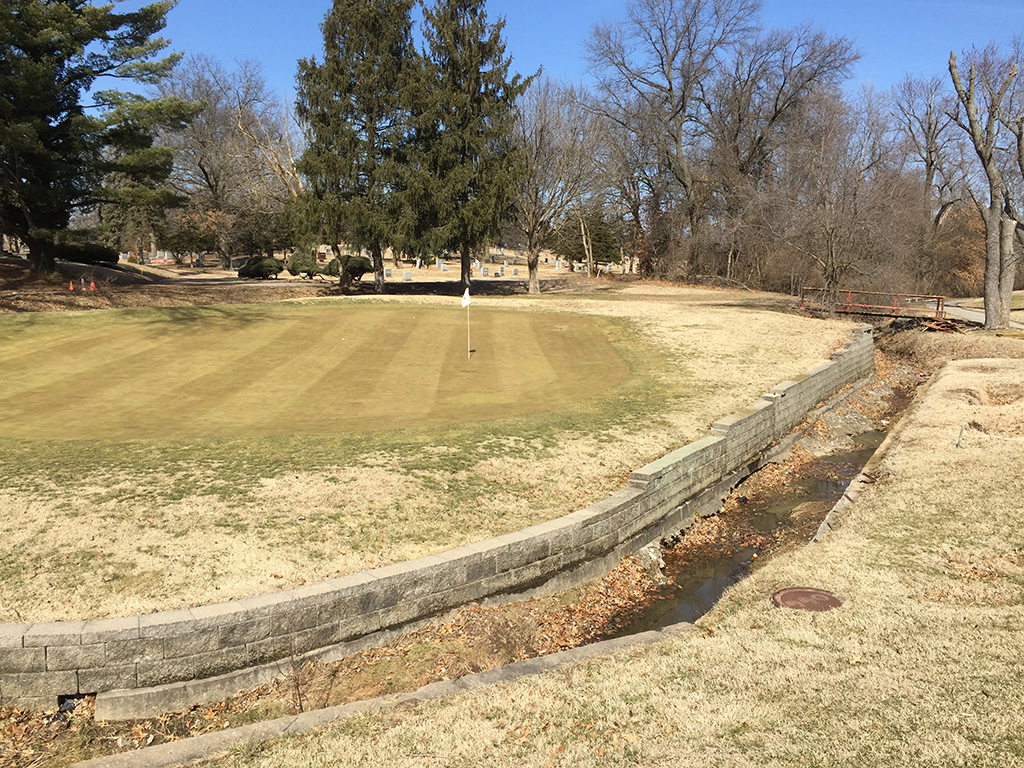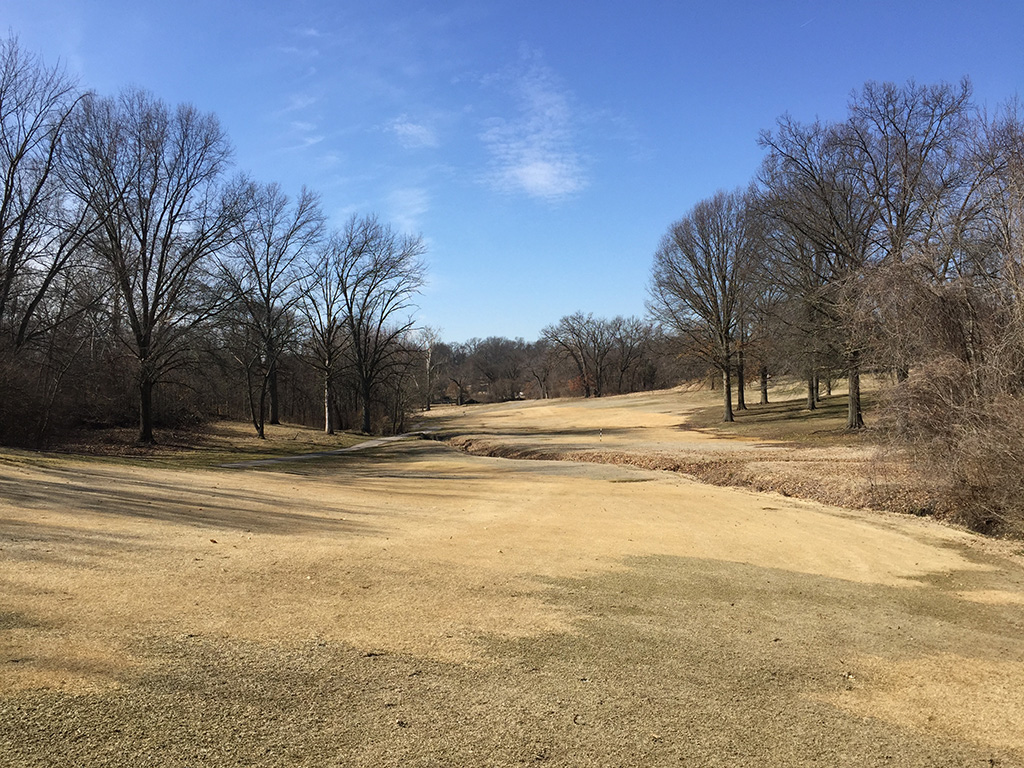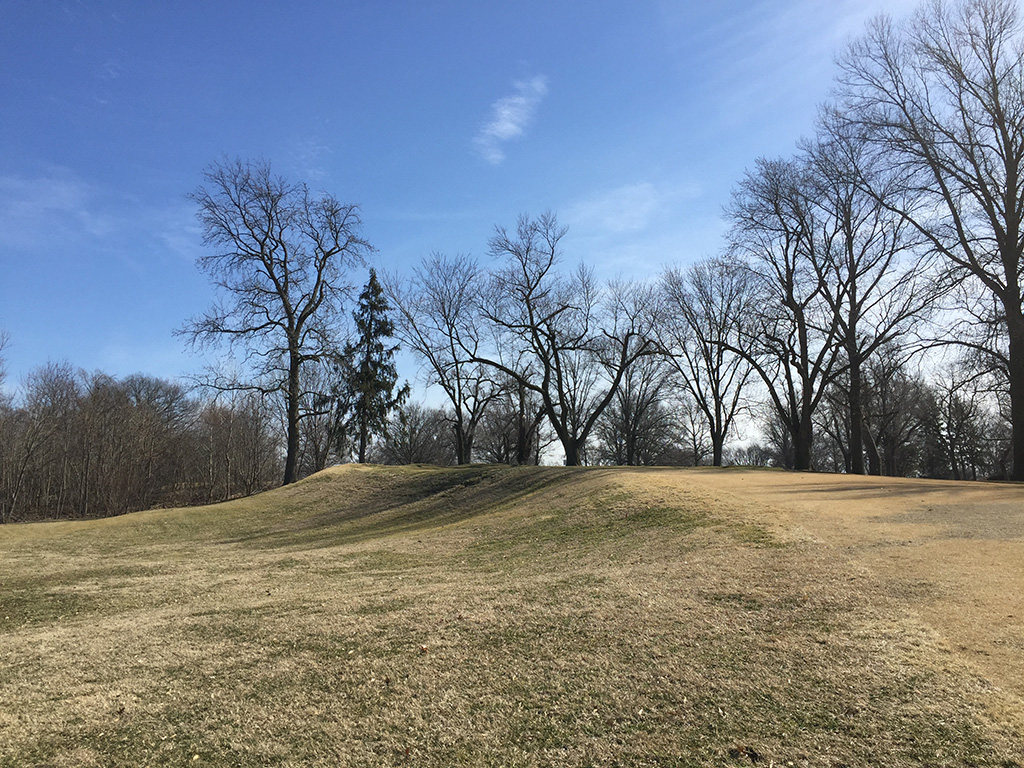It comes to begging: please, someone, adopt this scruffy land, this personage of quirk, this bishop of golf in the diocese of St. Louis, this acreage of history.
It comes to history: a Robert Foulis 1901 layout. His best preserved, I’ll venture, not having seen any others. Robert, one of the famous Foulis brothers, apprentices to Old Tom, first pros at Chicago Golf, inventors, clubmakers, golf spelunkers.
It comes to my own history: Normandie Golf Course, a reprieve from school, a shack for a clubhouse, a $15 walk, a putter made by Foulis himself, blind shots, soaked fairways, mud-pits for bunkers.
History comes from the Greek, historia, or “finding out.” “Finding out,” as in working your way through corridors, over creeks and hills, across greens. Normandie, which announced that it would close indefinitely on Monday, January 13, is all about “finding out.” The blind shot. The mud ball. The rickety putt.
As for another, more familiar kind of history, here are the rote facts, the pebbles in a row that, for the contemporary golfer (or investor), elicit little more than a grunt: it’s the oldest public golf course west of the Mississippi! It hosted the 1908 Western Open!
History: not unrelated, etymologically, to wit. The routing (largely unchanged, from what I can see on grainy aerials) swoops and peaks across the terrain, each hole like a clever turn of phrase.
The first few holes are fine; the final nine are, almost without exception, great. The par 3s tempt, test, and entertain. Steep greens, bunkers like knots in pine. The 250-yard 18th, par 3.75, grins with a 40-yard-wide runway to the hole. Each hole—grizzled, nearly 120 winters after construction—has some singular streak of wit.
Normandie’s greens encourage an array of shots. On the par-4 14th, the front pin on the gourd-shaped green rewards a high short iron that can use the backstop. The trade-off—the strategic wit—is that it’s the narrowest part of the elevated green, so slight misses get repelled sideways. The back pin, offering an upslope and a wider landing area, accepts longer irons that skip forward.
The greens at Normandie also discourage certain shots. I can admit without shame to laying up on the long 10th, where only a heroic drive up and over a hill opens up a heroic iron over a stone-edged burn fronting the green. Too heroic for me.

The 10th green at Normandie. Photo credit: Colin Criss
But wit needs no hero. One course employee, cutting greens ahead of me, paused his work and turned off his machine when he saw my approach clear the back edge of the par-3 5th. He laughed as I failed to keep my chip on the same narrow tier as the hole. A cruel wit, that green. The employee moved on to trim the next.
All of this history makes me sad. Normandie’s website has been replaced by a dispassionate corporate statement. It states that a proposal for a renovation—one that I was skeptical of, as it promised “to dramatically remake Normandie by rerouting holes”—was dismissed. What’s especially frustrating is that the course is brilliant as it stands. It doesn’t need a rerouting, or a new clubhouse, or a new driving range. If anything, it needs new drainage and a couple of chainsaws.
If you are stuck on the mud-pits-as-bunkers detail in this history, I encourage you to avoid them. They are hazards. C. B. MacDonald’s proverbial “herd of elephants” would be happy with these bunkers, often finding a watering hole at the bottom of each.
The conditioning is poor; I won’t deny that. At Normandie, rub of the green leaves a rash. The 11th hole, a par 4 running across a diagonal creek, is often a swamp. The fairway can be so mucky that it pulls at your shoes.
But the old architecture at Normandie—severe contour, unique holes, strange angles—has come back into style. It’s fun golf.
I’ve played Normandie six times. Only twice has the 11th been dry enough to allay fears of a plugged lie off the tee. Even so, the hole is my favorite in St. Louis. The diagonal creek demands careful measurement off the tee. The farther up your drive, the better your angle into a green perched on a diagonal rise. The elevated green: hospitable to an incoming iron, hostile to a nervy putt, mortal to a chip from the back edge.
-

The 11th fairway at Normandie. Photo credit: Colin Criss
-

The 11th fairway at Normandie. Photo credit: Colin Criss
They say the Old Course is best in wind, but still they love it in quiet weather. Let the same stand for Normandie—it’s best dry, but I love it soaking wet as well.
History: etymologically, quite far from love, a language family apart. But let a history build toward love. Many courses are closing: why should this one not? Well, I love this one. To save a course: to find it out, to love it, to tell of the love, to plead for love, to hope.
Colin Criss has an MFA in Poetry from Washington University in St. Louis. He lives in Moscow, Idaho.
This article is part of The Fried Egg’s Sunday Brunch series, which presents golf stories that don’t fit the usual categories. Find out more about the series here.


 by
by 
